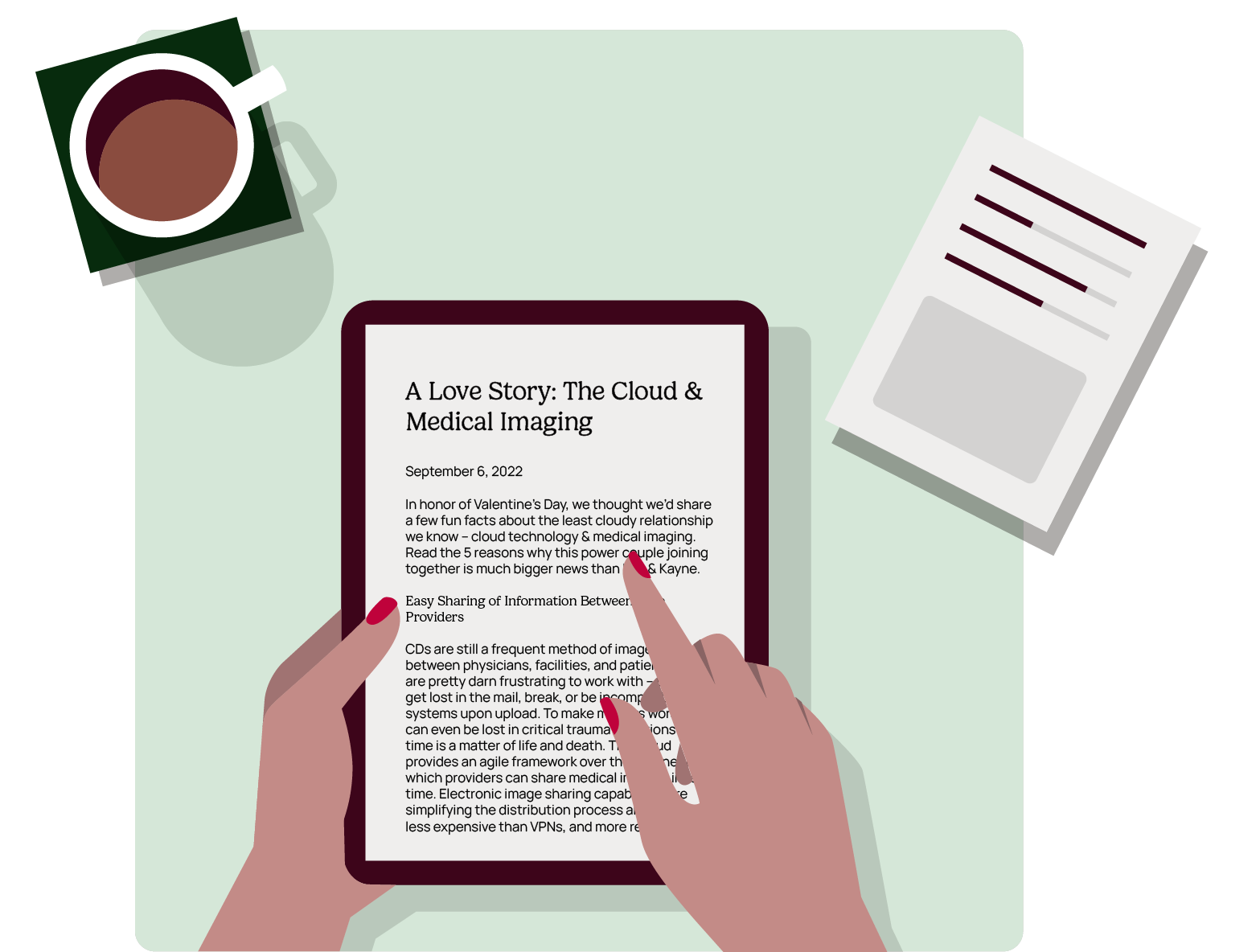September 6, 2022
In honor of Valentine’s Day, we thought we’d share a few fun facts about the least cloudy relationship we know – cloud technology & medical imaging. Read the 5 reasons why this power couple joining together is much bigger news than Kim & Kayne.
Easy Sharing of Information Between Care Providers
CDs are still a frequent method of image transport between physicians, facilities, and patients. CDs are pretty darn frustrating to work with – they can get lost in the mail, break, or be incompatible with systems upon upload. To make matters worse, CDs can even be lost in critical trauma situations where time is a matter of life and death. The Cloud provides an agile framework over the Internet in which providers can share medical imaging in real time. Electronic image sharing capabilities are simplifying the distribution process and are faster, less expensive than VPNs, and more reliable. This dynamic duo is making waves throughout healthcare as together they take down siloed systems, enhance interoperability across complex networks, create seamless image exchange workflows, image enable EMRs/EHRs, allow for seamless mobile viewing from anywhere and at anytime, and even create scalable storage solutions.
Scalable Storage
The ability to reliably retrieve a backup copy of imaging data that might be otherwise lost due to hardware/software or network failures is no longer just good practice, but a federally mandated requirement. Using cloud storage solutions as a backup method provides instant access to secondary versions of medical images and priors if primary data becomes unavailable.
Anywhere, Anytime Access to Imaging Data
The cloud is avalible on any mobile device – from your IPad to your Iphone. With the use of mobile devices, patient images and information can now be accessed from any location, at anytime. Real-time image viewing is particularly critical in emergency situations. For example, instead of rushing into the office to view an image, medical personnel can make preliminary diagnoses right from home. In larger institutions, mobile viewers allow multiple doctors to view the same studies simultaneously, which is especially useful for collaboration across networks. Emerging cloud technologies in 2016 will continue to make ubiquitous access to imaging on any device a reality using nothing more than a zero-footprint, HTML 5 viewer.
Reduce Duplicate Radiology Exams
Overexposure to radiation is one
of the main concerns in imaging today. As critical as imaging is for early detection and improving care, if overused, it can cause great harm. The U.S. healthcare system spends $10-15 billion each year on redundant radiological exams that stem from a provider’s lack of access to patients prior imaging exams. The availability of electronic images and anytime, anywhere access to critical imaging information can save the healthcare system billions of dollars and reduce patient exposure to radiation.
Capex to Opex
The potential for cost savings make a compelling case for the cloud. One way of controlling expenses is to lower standing costs and replace them with discretionary costs. Shifting from a capital expenditure (CapEx) to an operational expenditure (opEx) reduces the upfront investment in hard-ware and infrastructure. By employing a SaaS (Software-as-a-Service) business model, cloud providers can offer users a predictable fee structure.





